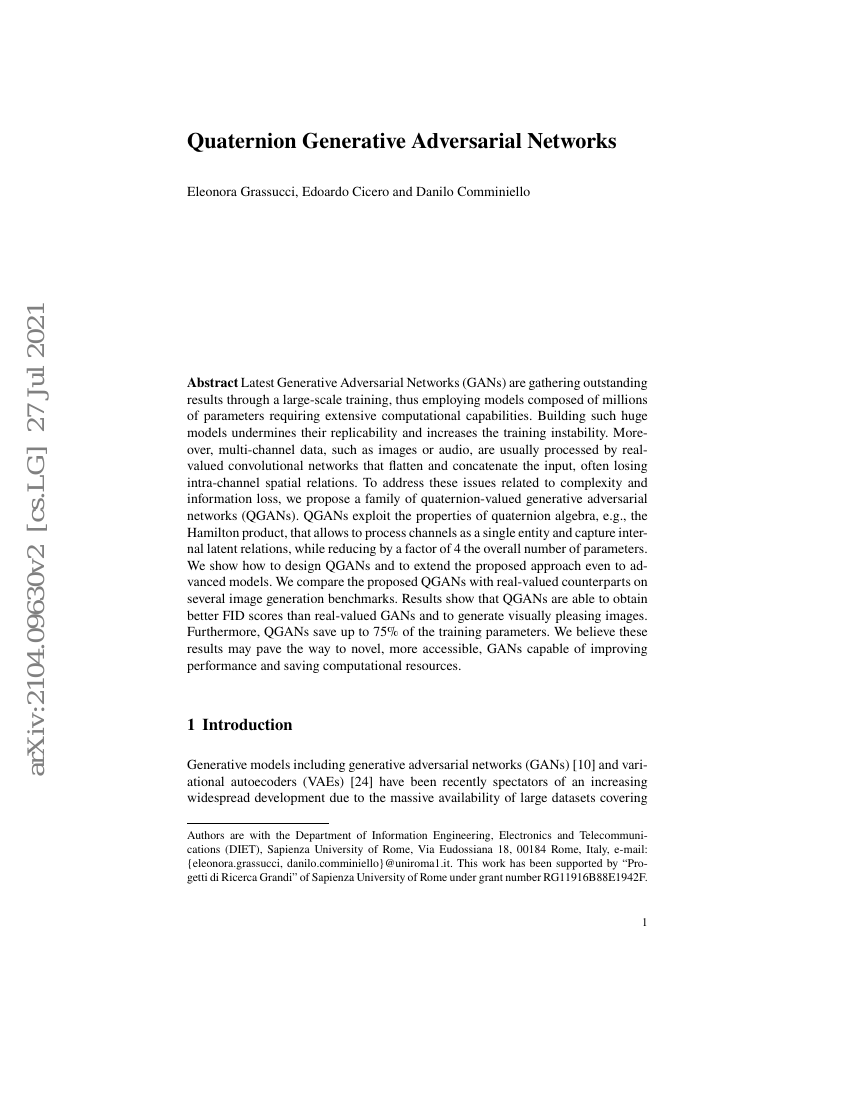Command Palette
Search for a command to run...
Eleonora Grassucci Edoardo Cicero Danilo Comminiello

Abstract
Latest Generative Adversarial Networks (GANs) are gathering outstanding results through a large-scale training, thus employing models composed of millions of parameters requiring extensive computational capabilities. Building such huge models undermines their replicability and increases the training instability. Moreover, multi-channel data, such as images or audio, are usually processed by realvalued convolutional networks that flatten and concatenate the input, often losing intra-channel spatial relations. To address these issues related to complexity and information loss, we propose a family of quaternion-valued generative adversarial networks (QGANs). QGANs exploit the properties of quaternion algebra, e.g., the Hamilton product, that allows to process channels as a single entity and capture internal latent relations, while reducing by a factor of 4 the overall number of parameters. We show how to design QGANs and to extend the proposed approach even to advanced models.We compare the proposed QGANs with real-valued counterparts on several image generation benchmarks. Results show that QGANs are able to obtain better FID scores than real-valued GANs and to generate visually pleasing images. Furthermore, QGANs save up to 75% of the training parameters. We believe these results may pave the way to novel, more accessible, GANs capable of improving performance and saving computational resources.
Code Repositories
Benchmarks
| Benchmark | Methodology | Metrics |
|---|---|---|
| image-generation-on-celeba-hq-128x128 | QSNGAN | FID: 29.417 IS: 2.249 |
| image-generation-on-cifar-10 | QSNGAN | FID: 31.966 |
| image-generation-on-oxford-102-flowers-1 | QSNGAN | FID: 115.838 IS: 3 |
| image-generation-on-stl-10 | QSNGAN | FID: 59.611 Inception score: 4.987 |
Build AI with AI
From idea to launch — accelerate your AI development with free AI co-coding, out-of-the-box environment and best price of GPUs.